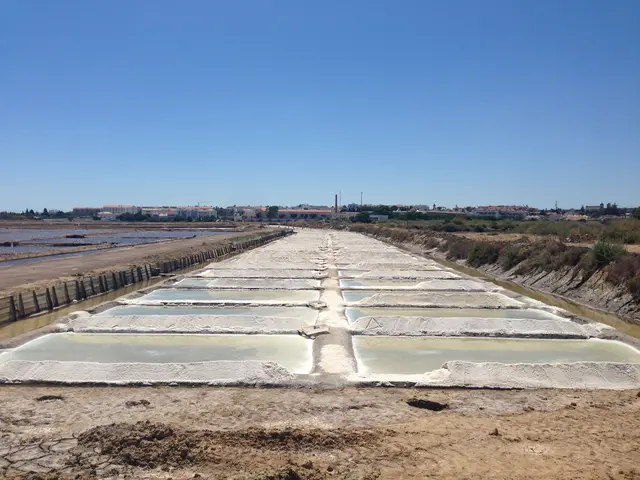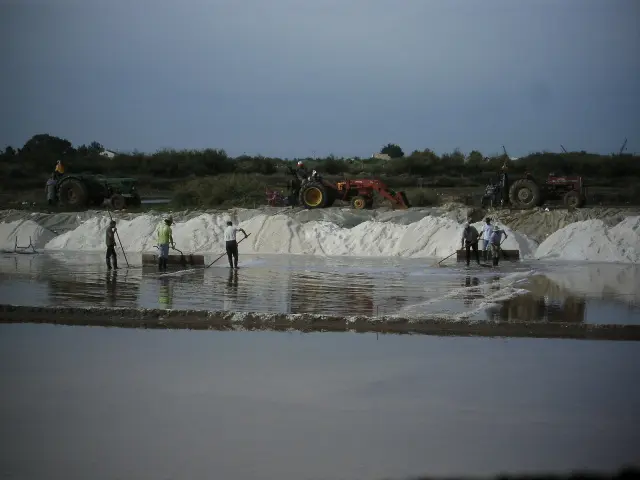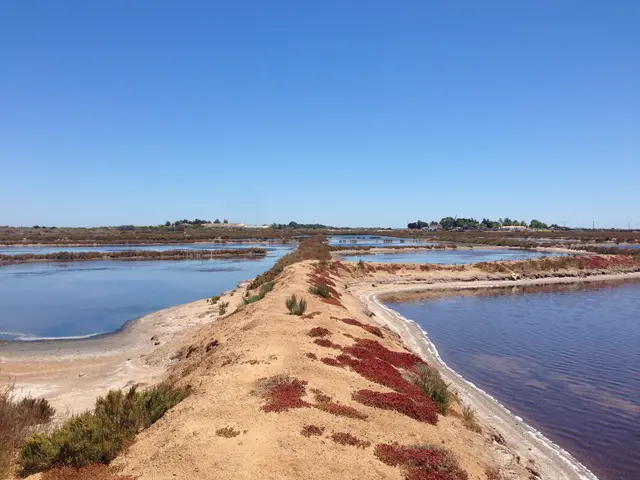Salt pans
Introduction
The Salt Pans of Tavira are a living symbol of Algarve’s heritage, stretching back more than two thousand years. Shimmering beside the Ria Formosa, Tavira’s salinas blend nature, history, and culture. Even today, they produce prized sea salt while supporting flocks of flamingos. Exploring Tavira’s salt pans brings us face to face with tradition—where every grain carries stories of empires, cuisine, and resilient families who kept this Roman-era craft alive.
Historic Highlights
🧂 Ancient Roots and Roman Innovation
The Salt Pans of Tavira stand as a testament to millennia of ingenuity and persistence. Here, early Phoenicians began harvesting sea salt in the 8th century BCE. But it was the Romans, drawn to nearby Balsa’s fish-processing, who gave Tavira’s salinas their signature grid pattern. These Roman salt pans, known as marinhas, provided the vital ingredient for preserving fish and crafting garum—the Empire’s famous sauce. Classical writers, from Pliny to local chroniclers, praised Tavira’s flos salis (flower of salt) as a delicacy for the elite.
“Tavira nasceu do sal e do mar” (Tavira was born of salt and the sea).
— Local Algarvian proverb
🌙 Moorish Expansion and Medieval Prosperity
Under Moorish rule, Tavira—then Tabira—remained a bustling port of Al-Andalus, its salt likely reaching North Africa and Spain. Ingenious water control, perhaps from Islamic acecas (tidal mills), refined the craft. When Portugal took Tavira in 1242, salt production surged. A 1266 charter put all salt pans under royal control, recognizing their worth. Shipping salt-cured tuna and sardines, Tavira’s harbor connected Portuguese fleets with distant shores, supplying provisions for North Africa and Europe alike.
🏰 Golden Age and European Trade
The 16th century saw deliberate expansion: King João III ordered 28 new salt pans built. Tavira flourished as the Algarve’s main port, exporting “white gold” to preserve cod and herring across Catholic Europe. Salt was so dear it was once traded ounce-for-ounce with gold, feeding explorers and monasteries alike. Salt warehouses lined Tavira’s waterfront, while the Forte do Rato guarded this vital trade. The rhythm of summer harvests—families gathering salt, sharing meals—became part of local memory.
“O sal de Tavira corre-me nas veias” (Tavira’s salt runs in my veins).
— João Rodrigues, marnoto
🌅 Decline, Revival, and Nature’s Dance
By the mid-20th century, industrial salt, refrigeration, and changing diets weakened Tavira’s hand-crafted trade. Out of over 130 salinas, only a few survived by the 1990s, rescued by families like the Simeãos, who kept traditions alive through hardship. Yet, a new appreciation for artisanal methods and wildlife has sparked revival. Today, active pans gleam again each summer—and the arrival of flamingos at dusk has become a cherished sight, linking Tavira’s culture to its unique landscape.
💡 Visitor Tip
Plan a visit in late summer, when salt harvests peak and guided tours may let you rake salt or float in warm brine, sharing in the rhythm of centuries past.
Timeline & Context
Historical Timeline
- c. 8th century BCE – Phoenicians begin harvesting sea salt in Tavira region.
- c. 3rd century BCE–5th century CE – Romans formalize salt pans; Tavira supplies salt to Balsa’s fish-processing industries.
- 8th–13th centuries – Islamic era maintains and possibly expands salinas; Tabira is a key port.
- 1242 – Christian reconquest of Tavira by Portuguese forces.
- 1266 – King Afonso III’s charter reserves all salinas for the Crown.
- 15th–16th centuries – Expansion and golden age; Tavira supplies salted fish and sea salt across Europe.
- 1532 – 28 new salinas constructed by order of King João III.
- 17th–18th centuries – Tavira salt exports reach the Baltic; competition grows.
- 19th–20th centuries – Handcraft production continues, but faces industrial and market decline; refrigeration reduces demand.
- 1960s – Last major boom: over 130 salinas active in Algarve.
- Late 20th century – Only a handful of salinas remain operational in Tavira.
- 2000s–present – Revival through artisanal production, tourism, and protected status (DOP granted 2013).
Salt Pans as Economic and Strategic Assets
From pre-Roman Phoenician traders to the Roman Empire’s expansion, Tavira’s salt pans were crucial for preserving fish, sustaining long-distance trade, and contributing to the local economy. The Roman grid system (reticulated marinhas) standardized the saltworks, making Tavira a recognized node in an ancient Mediterranean economic network. By the medieval era, control of salinas became a royal prerogative—enshrined in law and influential in maritime policy. Tavira’s strategic salt reserves underpinned Portuguese conquests abroad, and made the harbor central to European shipping routes.
Socio-Cultural Fabric and Community Memory
Generations of Tavira’s families—marnotos and salineiros—developed an intimate knowledge of tides, weather, and salt making. Salt was not just commerce; it was the heart of community rituals and local identity. Proverbial wisdom (“Tavira nasceu do sal e do mar”) and oral tradition, such as celebrating harvests with tuninha de sal at Christmas, embedded salinas in Tavira’s folklore. Even economic downturns, when salt could serve as currency, are remembered in anecdotes passed down between generations.
Comparative Heritage: Tavira, Castro Marim, and Cádiz
Tavira’s salt heritage is mirrored in the salinas of Castro Marim (Portugal) and Cádiz (Spain). All share ancient roots, similar techniques, and the challenge of modern decline. Castro Marim’s interpretive center and summer festival revive traditions, while Cádiz’s old ponds, dikes, and historic windmills display Iberian adaptation to salt landscapes. All three sites face issues of climate change, skill preservation, and economic sustainability, but also exemplify community-driven revival and eco-tourism potential. Cross-border recognition, as seen in Ramsar and Natura 2000 protections, positions these landscapes as shared European patrimony.
Environmental and Conservation Dynamics
The fragile fabric of Tavira’s salinas is threatened by rising seas, erratic weather, and urban encroachment. Yet, their location within the Ria Formosa Natural Park, coupled with the modern surge in interest for artisan salt (DOP status, eco-tourism), encourages their protection. Abandoned pans become havens for birds, notably flamingos, integrating cultural and ecological aims. Ongoing projects—such as EU-funded restoration, educational outreach, and traditional craft documentation—serve both heritage and habitat. However, sustainability depends on transmitting marnoto expertise, creative business adaptation, and cautious water management in an era of climatic instability.
Revival and Contemporary Meaning
Tavira’s salinas now anchor local pride, culinary identity, and innovative forms of tourism. Hands-on visitor experiences, school education, and community exhibitions ensure the salt pans remain relevant. The transformation of salt from an everyday staple to a treasured cultural marker illustrates how heritage adapts to modern pressures and opportunities. Tavira’s story, when seen in European context, exemplifies the endurance, transformation, and enduring human connection shaped by working with the rhythms of sea and sun.


